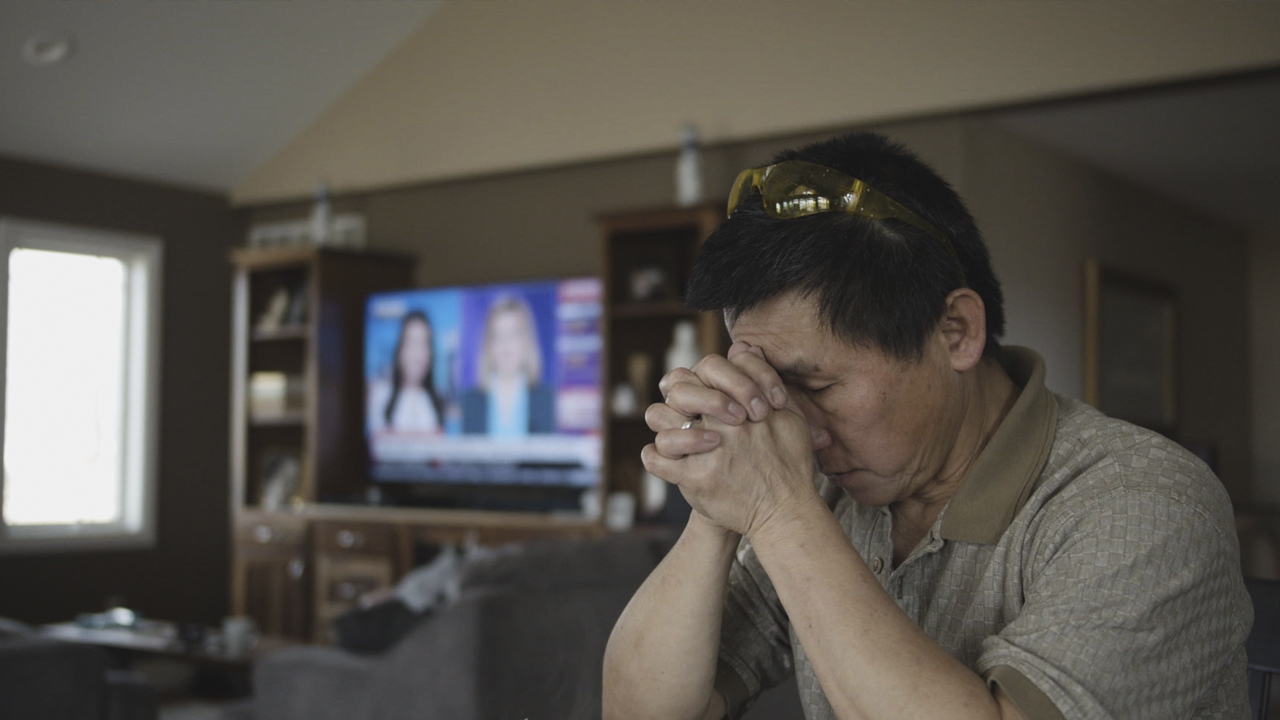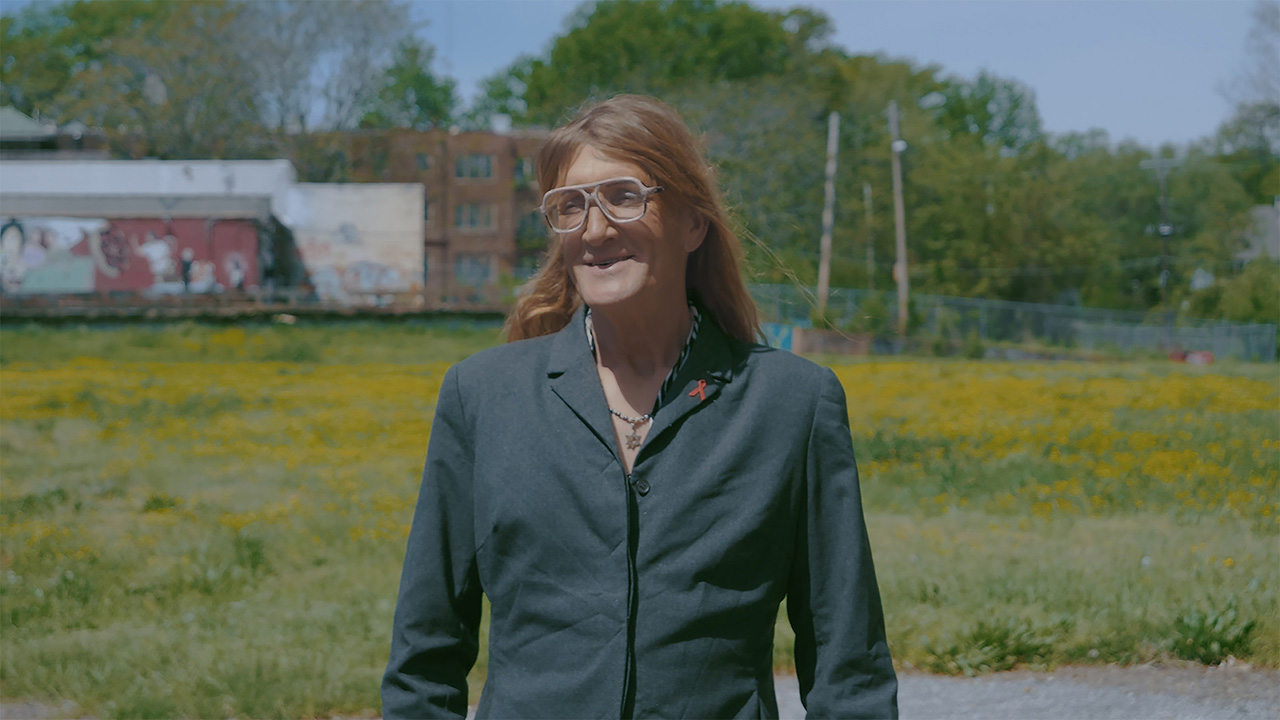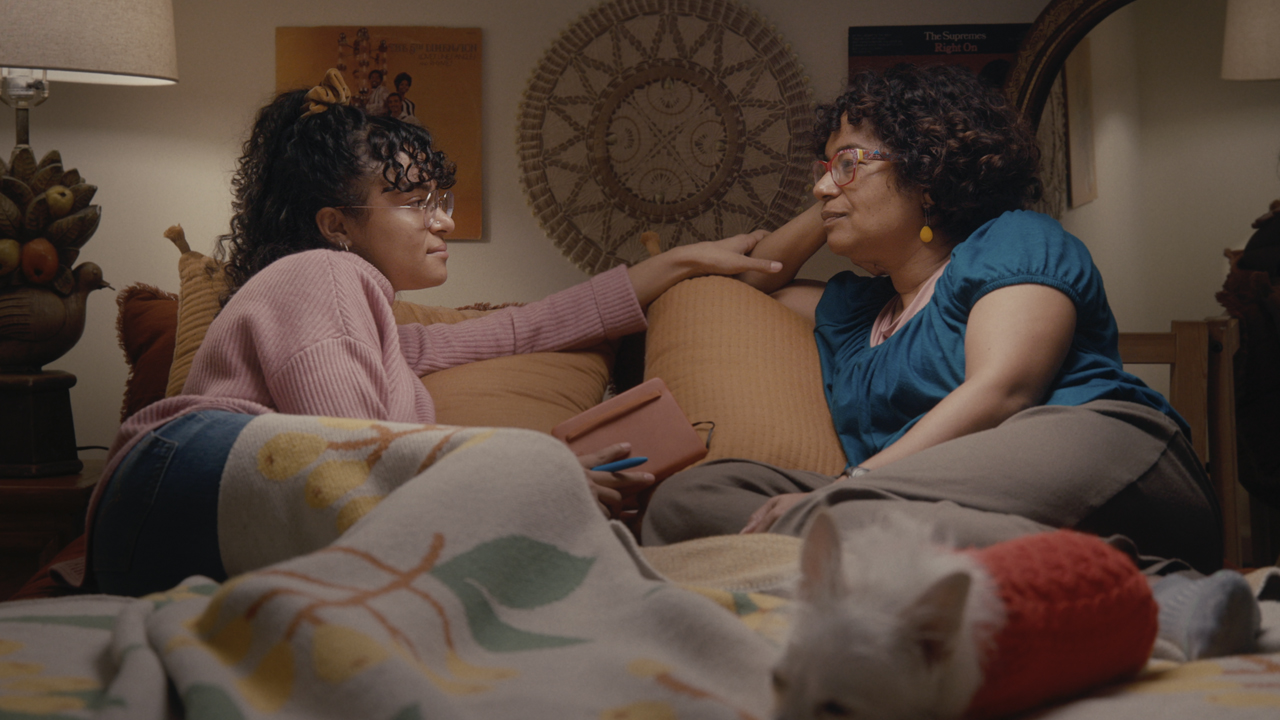

My main takeaway from last year’s DOC NYC was the festival community’s growing discontent with the status quo of the industry. At 2021 Pro Panels, attendees demanded safer set conditions, fairer distribution deals, stronger filmmaking ethics, and guidelines to facilitate and standardize such improvements. What stood out to me about DOC NYC 2022, which ran in person from Nov 9-17 and virtually until November 27, was collective anxiety about the caliber of the response so far to last year’s concerns. Executives pressured to make structural change spoke in false confidence about their nascent efforts. Workers directly affected by their actions spoke with passion and impatience. Such subjects were coupled with the issue of the hour—how to best handle the liquidity of participant trust and consent—an old issue brought to the fore again by the well-documented controversy of Meg Smaker’s Sundance 2022 premiering Jihad Rehab, recently retitled The UnRedacted, a film whose very existence endangers the lives of the four Yemeni men at the film’s center who were unlawfully detained at a Saudi carceral institution. But as a Short Film juror this year along with Jesus Hernandez (Founder of Latinreel) and Poh Si Teng (Executive Editorial Producer at ABC News Studio), I also found hope and relief at the festival through standout, emerging filmmakers in the shorts lineup, whose thoughtful work with participants and form the rest of the industry has something to learn from.

Covering Pro Panels again this year, participant consent bled into a lot of the topics covered. In the first Producing Day panel, broadly titled “Trust,” moderator Rahdi Taylor (Concordia Studio) asked Margaret Brown (director of Descendant), Essie Chambers (producer of Descendant), David Sieve (director of Bad Axe), and Ondi Timoner (director of Last Flight Home) how they each approached and maintained the trust of the people they filmed. In Sieve’s and Timoner’s cases, the trust in question was with their immediate families. The former, a first-time director, looked on as the restaurant his parents were able to start and run successfully for years—an American dream they had miraculously attained —absorbed harassment from residents of Bad Axe, Michigan, after taking a public stance against white supremacy and police violence on the restaurant’s social media pages. In MTV Documentary Films’ Last Flight Home, Timoner intensely engages her family and father in the days leading up to his assisted suicide. In preparation, she saw a therapist, “because who films death?” Therapy was broached again in “Producing, Directing and Ethical Dilemmas,” with Camilla Hall (co-director of Subject) saying, “If you can afford a camera, you can afford a therapist.” More and more, I see the subject entering conversations about the filmmaking process.
Both of the directors’ families were relatively used to them carrying a camera around. “They’re never aware of the camera because that’s my role in the family,” Sieve explained. But often in Bad Axe, his family does feel aware of his camera and frustrated with it. “Can we just stop for a moment?” his dad asks him early in the film during a family argument. Honoring the request, Sieve cuts for a moment and starts recording again. Later his sister Jaclyn asks, “Why are you filming me?” And more broadly and later yet, his father asks, “Why are you filming everything?” When the young filmmaker shares a crowdfunding video for the documentary that is critical of the conservative community harassing his family, his mother Rachel receives a violent threat over the phone at the restaurant. Afterward, exhausted, she reminds her son that, because he does not live in Bad Axe and is only staying there during the lockdown, only she and the rest of the family will face the total fallout of his actions. Sieve asks his mother if she still wants to continue filming, but we never get a straight answer. Although the inclusion of this critique is an honest choice, he leaves the question of her comfort and consent suspended for the audience to decide, rather than for him to eventually clarify and resolve.
But he is shrewd in showing consent with his family as an ongoing, sometimes messy process, as when he films his family watching footage throughout the shooting process. Back in the panel on Ethical Dilemmas, Camilla Hall referenced a “consent calendar” used by her co-director, Jennifer Tiexiera, on Subject: “The release form is not enough, consent can change, and don’t be scared of that—have real conversations. Jen’s ]current HBO Project has a consent calendar to check in on how the participants feel about releases throughout the process—it’s a document that can evolve.”

As a portrait of “Trump’s rural America,” though, Bad Axe is, if I’m being generous, a barely left-of-center affirmation of the American dream. This is largely due to Sieve never even attempting to deconstruct the myth, perhaps out of respect for what his family accomplished. Fast upward mobility is attainable for anyone willing to work hard enough for it: that much has been sold to us time and time again. To that lie, the film seems only to add with emphasis, “attainable even for a marginalized person penalized for posting black squares on social media and voting blue in a red state.” You just have to work that much harder. In the end, this portrait of the early-pandemic US reveals itself to be a closed book, the election of Joe Biden and VP Kamala Harris is its happy and hermetic seal. This democratic win, on its own, is supposed to tie up all loose ends and make the Sieve family’s struggle all worth it somehow. That everything leads up to Sieve saying, “We did it, Joe!” attenuates the best of what comes before.
Perhaps the biggest obstacle for Timoner was transitioning from a “five-minute private memorial video to a public feature film.” She described trust with her family as a constant “give and take.” But when an audience member asked for advice on how to measure consent with someone at the opposite end of the political spectrum, Timoner said, “They consent when they see the camera rolling.” That was it. Margaret Brown agreed. I was taken aback by the sudden contrast between their complicated attitude towards filming family and their simple attitude towards filming political or ideological foes. Not that I disagree or think documentaries should not deceive people in need of exposure. I just lost the compass in the jump, and there wasn’t enough time left for the panelists to fill in the gaps.
Margaret Brown didn’t deal with family but with communities in her hometown, Mobile, Alabama. She had originally planned to interrogate the descendants of Timothy Meaher, financier of the last-known voyage to transport African captives on the Clotilda, a wooden schooner ship, to the US in 1860, decades after Congress had outlawed the international slave trade. But when the present-day Meaher family declined to talk with her on record after the remains of the Clotilda were found (its captain burned and sunk it when he returned, to eliminate evidence of the crime), Brown needed a new way into the story. She turned to the descendants of the West African captives that the Americans had purchased from Dahomey, the West African kingdom recently portrayed as resistant-slave-selling-but-feminist-heroes in Gina Prince Bythewood’s The Woman King. To better accommodate this major change in perspective and approach, Brown hired Essie Chambers as a producer, whose role was to fill in any gaps of awareness Brown might have as a white filmmaker and help to gain the trust of the Africatown community, where many descendants of the Clotilda passengers originally settled. “I’m a white woman who made a film about a deeply Black experience, and I didn’t know that [was going to be the case] when I started.” Chambers summed up their dynamic: “She trusted me to be brutally honest, and I trusted her to listen.” Whenever any of the discussion intersected with race, Brown would defer to Chambers. “We weren’t centering white voices, right?” the director turned and asked the producer. As far as I could tell, Chambers seemed to be present for much of the filmmaking process, helping Brown to gain the trust of the Africatown community but also advising on the creative direction of the story as a Black woman. I wondered if such voluminous duties didn’t look more like those of a co-director. And I didn’t envy her bearing the unrealistic and, I imagine, utterly draining responsibility of being the spokesperson for an entire race on an array of practical and creative matters.
The hiring of a key crew member to fulfill a quota and/or with the expectation that they fulfill not only their role’s technical responsibilities but also serve as a spokesperson for an imagined pan-racial community is nothing new. Perhaps it has just been especially obvious in the last few years. And it touches all departments—documentary editors specifically sounded off about how they’ve been brought onto projects by white filmmakers to sprinkle authenticity onto a film after it has already been shot. This too-little-too-late concession of power to a collaborator of color mimics a land acknowledgment that never leads to the relinquishing of land to its original owner. Likewise, I have never seen a director who realized they may not be the best person to helm a story relinquish their title to someone better suited.
Cue DOC NYC’s cinematography case study of director Alex Pritz’s The Territory, a critically celebrated co-production between the white filmmaker and its several Urueu-Wau-Wau collaborators and participants. The National Geographic documentary depicts the usurping of their land by Brazilian farmers and illegal settlers, a conflict further exacerbated and mischaracterized in the media by Brazil’s ex-president, Jair Bolsonaro. In the Pro Panel, Pritz admitted he had not originally intended to launch a co-production with the Ureu-Wau-Wau: “We had no master plan to create a co-production; we embarked without knowing.” When COVID hit, his crew was no longer allowed into the territory, and his Indigenous collaborators asked for better equipment to finish the final act of the film themselves. So the choice was purely circumstantial and asked for by the Ureu-Wau-Wau crew, who also served as DPs (Tangãi Uru-eu-wau-wau is credited as a cinematographer beside Pritz), sound people, and executive producers throughout production.
By the time Pritz realized the community had already been using cameras as artistic and advocacy tools to defend their territory, he had already begun shooting. Joining the director on the panel, producer Gabriel Uchida described how the Ureu-Wau-Wau crew’s filmmaking approach was different from their own. “Each of the six villages has its own leader, and all must make every single decision together—sometimes they would talk for days or weeks over what would be a simple decision to us. We took three years to produce the film, being mindful of that.” Pritz added, “When we handed them cameras, it affected how I was shooting as well, seeing how they chose to represent themselves, with a curious and playful framing. The audio became really important. One 18-year-old hated the lav, and when they filmed themselves, he said, ‘Give us the nice lavs!’ We gave them excellent sound equipment.”
The Ureu-Wau-Wau asked for better equipment and more control. Again, I wondered whether a given credit matched the depth of a collaborator’s work. And again, I wondered what a film might have been had its director—who, in this case, was also its cinematographer, producer, and co-editor—conceded their power and resources to one another. In fairness, Pritz did not just film the travails of the community, use it to elevate his career, and leave; at the time of the panel, he was working with The Federal University of Rondônia to build a media center for the Ureu-Wau-Wau to produce and show their own films.

Through both their form and means of production, the filmmakers of my favorite shorts in this year’s lineup—Aurora Brachman (Still Waters) and Kriss Li (First Months of Freedom)—sustained a safe space for the people in their films and, by extension, me as a viewer. Unlike the aforementioned features, I always felt I could trust these shorts, even as they probed intimately into others’ lives. Neither film won in the category I myself juried. They left less of an impression on my colleagues, who felt uninvited by First Months of Freedom’s rugged visual arrangement, which had the opposite effect on me, though they still saw value in both films. We gave the Grand Jury Prize to Varun Chopra’s Holy Cowboys and special mentions to Shuli Huang’s Will You Look at Me and Dmytro Sukholytkyy-Sobchuk Liturgy of Anti-Tank Obstacles.
Kriss Li’s First Months of Freedom was one of the only films in the shorts lineup whose appearance and arrangement did not feel like it was straining to prove its worth by presenting a self-consciously slick or traditionally beautiful surface. We start close up on what looks like archival footage of Minnie Riperton singing “Lovin’ You” on a television screen. The way Li’s recording-of-a-recording dulls the film’s archival images smoothens the passage between it and Catherine Lynn Quick’s soft, pixelated cell phone camera work. She’s the star and subject of the film, just months out of prison, and she too has nothing to prove with the sounds and images she uses to tell her story. They’re inherently imbued with her frank and sensitive personality and mood—camera movement with a lulling, gentle shake, the lens looking up or down and rarely framing herself or her surroundings at eye level. It was apparent to me that Quick had the freedom to shoot however she pleased—that Li gave her open direction. In other matters, though, Quick seems to appreciate having guardrails. She misses prison. She lived most of her life in different institutions, but this one felt the most like home. It gave her everything—“free rent, food, books, computers, good friends, lots of sex… Zero stress.” Now she has none of that. Everything costs more labor than it’s worth. And stress seeps in from boundary-less open space. Then a cut to the only two shots in the film that Li shot flips the mood—a slow-motion, handheld crawl away from Quick with her hair and outfit all done up, and another crawl away from her in a motorcycle helmet that reads “Mother Cat” above the visor. Over this flattering portraiture, Quick chippers up to read a letter from her lover, Doc, who writes from prison, where he has everything—everything but her. Li’s earnest love letter intentions read clearly through their filmmaking, without needing to declare and promise them to the viewer.
In contrast, Brachman premeditates a framework for her participants, herself and her mother Susan, to incite difficult but regenerative interactions that may not have occurred within an open, improvisational structure that lent itself to natural, conflict-evasive habits. In Still Waters, Brachman and her mother discuss the abuse she experienced in the past and the verbal abuse the mother then inflicted on her daughter. The film starts with a symmetrical, static two-shot within which they are both carefully situated—comfortably lying together and locking eyes. This shot immediately evokes an off-screen history of discussion; both people seem to know totally what they’re in for. The stage and its pre-meditation enable a shared intention, rather than one of a documentarian who wishes to create in others only what they want to see.

As intimate as Still Waters is, there are necessary boundaries. Her mother’s abuse is described in only as much detail as an outsider needs to follow along. What is the role of a viewer in this healing process between two people? Exposing the conflict to audiences propels the daunting conversation that began in the film to continue off-screen. It may discomfort audiences and lead to uncomfortable, even inappropriate conversations in Q&As, hopefully ultimately to a cumulatively cathartic rupture. After the static two-shot, Brachman severs the intimate discussion with her mother from the image. It continues off-screen and falls out of sync with shots of the two having a different conversation we can’t hear. Memories of pain are verbally recalled over new images, or new memories, of curative bonding and acts of care—cuddling by the fire, Brachman gently combing her mother’s hair. The film exemplifies at an intimate but no less essential scale the restorative power of documentary. For a moment, it allowed me to forget the medium’s potential to cause harm, in so many dizzying, complicated ways—to forget that I simply trusted it.
This is the feeling I chose to take away from this year’s festival.
Aaron E. Hunt is an endeavoring filmmaker, cameraperson in production, and writer with bylines in Filmmaker, Criterion, Sight & Sound, Film Comment, American Cinematographer, MUBI Notebook, and more. He is also vice president of Dedza Films, a distributor for and by underrepresented filmmakers.




